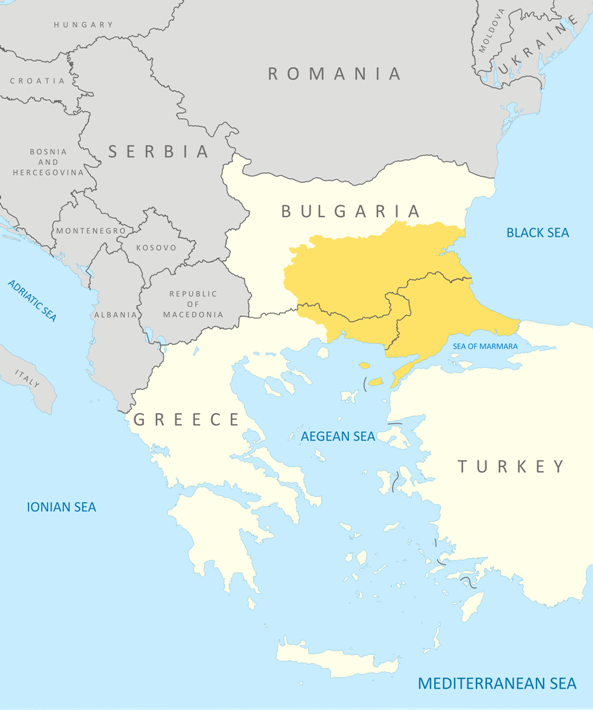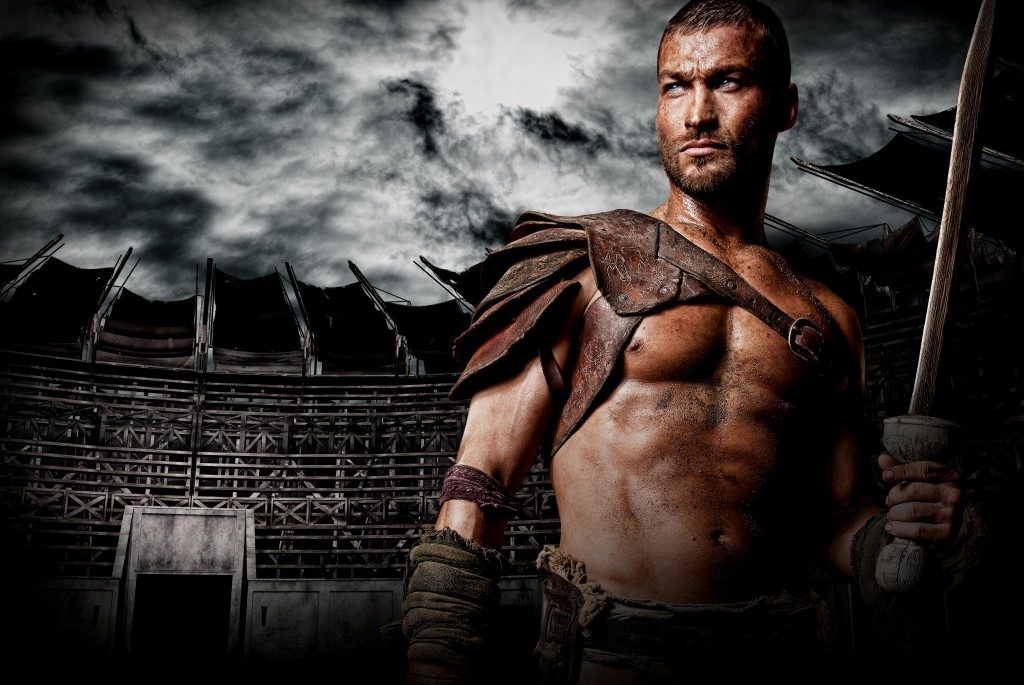Last time on History’s Badasses, we covered martial arts badass, actor, and director Bruce Lee. This time, we’re talking about the famous Thracian, Spartacus, a Roman slave and gladiator who lived during the first century BC. Spartacus was a warrior, a leader, and ancient badass who led an uprising against the military might of the Roman Empire itself. Sound pretty cool? Yeah, we think so too.
Early Life

PHOTO: wikimedia
We don’t know much about Spartacus’ early life. The Greek writer, Plutarch, described him as “a Thracian of Nomadic stock”. Other writers said he used to be a soldier for Rome. Thrace was a historical area that encompassed Bulgaria, Greece, and Turkey. In Spartacus’ time, it was home to a number of tribes that were all called “Thracian” by Greek and Roman historians and writers. These tribes had been absorbed into the Roman Empire in the form of two provinces: Thrace, and another called Moesia. The name “Spartacus” was most prevalent around the Black Sea, so our badass was probably from somewhere around there.
Capture and Escape
From what the Greek and Roman writers tell us, Spartacus served as a soldier for Rome for a while, but then decided that was boring, deserted, and joined a raider band and terrorized Thrace.
Well, the Roman legions decided they didn’t like that very much and took down Spartacus’ raider band and captured and enslaved him. Plutarch also tells us that Spartacus’ wife, who was a prophetess of a Thracian tribe, was captured and enslaved at the same time.
Because he was tall and pretty ripped, the Romans took one look at him and decided he’d make a good gladiator, so they sent him to Capua, to a gladiator school. They began training him as a heavyweight class of gladiator called a murmillo. Well, while Spartacus was brushing up on his scutum (massive shield) and gladius (a type of short sword) skills, he also got together a group of other seventy fellow enslaved gladiators and began plotting a great escape.
![Depiction of a Murmillo gladiator in film. [PHOTO: Historical Novels and Epic Fantasy]](https://historythings.com/wp-content/uploads/2016/12/murmillo_hotdog-hu.jpg)
Depiction of a Murmillo gladiator in film. [PHOTO: Historical Novels and Epic Fantasy]
From Vesuvius, Spartacus began his attack on the once invincible Roman Empire.
Leader of an Unstoppable Rebellion
Most historians agree that Spartacus’ plan was to fight his way with his huge army all the way back to Thrace. His own soldiers could disperse to their homes along the way, and he, eventually, would be right back where he belonged, safe and sound.
Spartacus’ battles began on the slopes of Mount Vesuvius, against a Roman militia that had been assembled around the mountain in hopes of starving the slave rebellion out. Instead, Spartacus and his men made ropes out of available vines, shimmied down the sheer, cliff-side of the volcano and attacked the Romans from the rear.From there, he and his men fell on another Roman legion, capturing the commander, killing the lieutenants, and arming themselves with the Roman soldiers’ weapons and armor.
At first, they were unstoppable. Spartacus organized strikes across Italy, plundering as he moved northward. He defeated both the Roman consuls in combat. The Roman Senate, alarmed, commissioned Marcus Licinius Crassus, the richest man in Rome, to take Spartacus down. They gave him eight legions – or about 40,000 soldiers – to do so.
Spartacus marched north and engaged Crassus in battle, but Crassus won and pushed Spartacus south, and that was where things started to go wrong for our badass.
Crassus had superior resources and a better trained and organized army. Even with 90,000 men, Spartacus couldn’t have hoped to compete with that. Crassus managed to cut him off from his supply lines and organized a military maneuver that split Spartacus’ army in two. From there, Spartacus’ men began to lose heart and fell into disorder.
Death and Legacy
As half of his army was destroyed by Crassus’ Roman legions, Spartacus regrouped his soldiers in an attempt to make one last, heroic stand. He reorganized his army and launched an attack on the Roman legions, but with his men routed and out of supplies, it was a losing battle.
In 71 BC, Spartacus was killed on the battlefield on the right bank of the river Sale, but even though he lost, he still remains as a heroic figure in history. Instead of submitting to a life of slavery, he chose to escape and choose his own destiny. To him, a death on a battlefield of his choosing was far better than any death in a coliseum. His name remains a title often invoked by revolutionaries across the world, looking for a chance at freedom.


